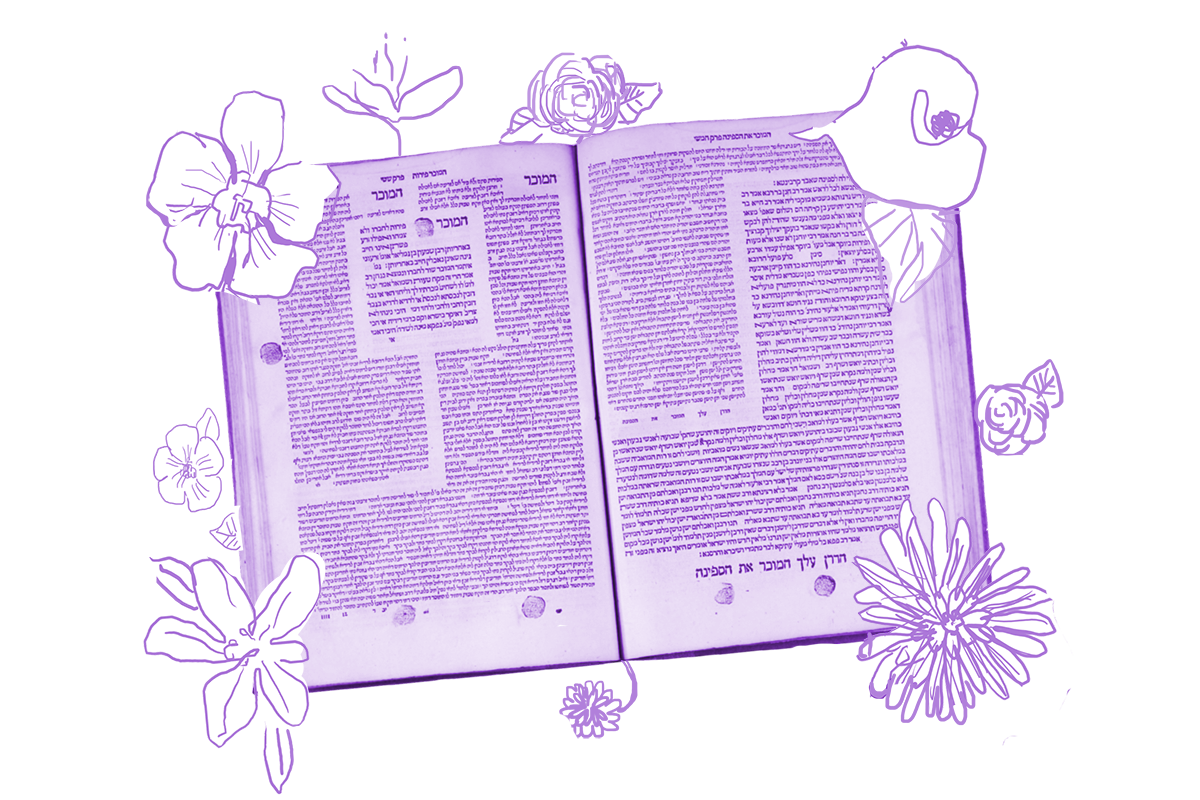We’ve spent the last few pages exploring many details of blowing the shofar on Rosh Hashanah. We’ve learned that the shofar must be made of horn, and blown with specific blasts, in a prescribed order, for predetermined lengths of time. But why a shofar at all? Why not any old trumpet? Or a saxophone? Or a tuba?
The Gemara began to address this question on the bottom of yesterday’s daf:
The sages taught: From where is it derived that the soundings of Rosh Hashanah must be performed with a shofar? The verse (Leviticus 25:9) states: “Then you shall make a proclamation with the blast of the shofar.”
Well, that seems clear enough — it must be an actual shofar, an animal’s horn.
With your help, My Jewish Learning can provide endless opportunities for learning, connection and discovery.
Except if we keep reading the verse that the rabbis are quoting from, it ends“… on the tenth day of the seventh month; on the Day of Atonement you shall make proclamation with the shofar throughout all your land.” The verse isn’t talking about Rosh Hashanah at all — it’s talking about Yom Kippur! And not only that, it’s not even talking about the annual celebration of Yom Kippur, but specifically the Yom Kippur that falls at the end of the 49-year jubilee cycle!
So how, then, do we get from the rules of a festival that is celebrated twice a century to the rules of a completely different festival celebrated annually? That special brand of textual logic for which the rabbis are famous!
Yesterday’s daf began to answer this question. Reading the verse about the jubilee Yom Kippur carefully, the rabbis point to an apparent redundancy: the text states that this shofar blowing occurs on Yom Kippur and also that it is the seventh month. But we already know that Yom Kippur is in the seventh month! The rabbis read this redundancy as teaching us that “soundings of the seventh month must be similar to one another.” In other words, the redundancy is a clue that if the shofar is required on the Yom Kippur of the jubilee year, it is also required on every other seventh month celebration — including Rosh Hashanah. No tubas allowed.
Next up for the Gemara: Why do we hear the shofar blasts in three sets of three blasts each? Again, a deep examination of the wording of scripture:
And from where is it derived that there must be three sets of three blasts each? The verse states: “Then you shall make proclamation with the blast of the shofar (teruah)” (Leviticus 25:9); and another verse states: “A solemn rest, a memorial of blasts (teruah)” (Leviticus 23:24); and a third verse states: “It is a day of blasting (teruah) the shofar to you” (Numbers 29:1).
The word for blasting, teruah, is mentioned three times in these verses, hence the custom of three blasts.
Today’s daf continues to mine these verses to explain the details of shofar blowing procedure. Next, instead of using a mild verbal redundancy or three occasions of a signal word as the interpretive hook, the rabbis employ a gezeirah shavah, a verbal analogy, to Leviticus 23:24 which briefly mentions Rosh Hashanah as being“in the seventh month.” Both Leviticus 23:24, about Rosh Hashanah, and Leviticus 25:9, about the jubilee Yom Kippur, employ the language of “in the seventh month.” This, the rabbis reason, is why on both occasions the blasts sound similarly, and on Rosh Hashanah we therefore have three sets of blasts with teruahs sandwiched between tekiahs.
The Gemara then offers the opinion of another Tanna (early rabbi) who points to an entirely different biblical text to bring to into conversation with Leviticus 23 and its introduction of Rosh Hashanah — Numbers 10, and the instructions given there about how to play a silver trumpet in order to tell the Israelites camped in the desert when it’s time to gather or move. This verbal analogy is more limited, explaining only how the shofar should be blown and not what it’s made of.
It’s worth thinking seriously about how each of verbal analogies, which rely so much on the customs surrounding the jubilee year Yom Kippur, can help shape how we experience listening to the shofar on Rosh Hashanah. The jubilee is about releasing the land and the people from debt, reclaiming inheritances, embracing freedom, creating a societal reset. What would it mean to see the shofar on Rosh Hashanah as not only connected to Yom Kippur but also this ancient cycle, one that most people would have experienced only once in their lifetimes? What would it mean to hear the shofar as a call to action, to gather and to move together toward a better future — not just for ourselves but for the entire world?
Read all of Rosh Hashanah 34 on Sefaria.
This piece originally appeared in a My Jewish Learning Daf Yomi email newsletter sent on November 12th, 2021. If you are interested in receiving the newsletter, sign up here.



